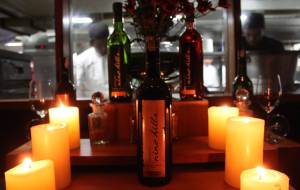Archive
Vine To Wine
In September, we had done a feature on the stages of grape-growing – Nine Hills Vineyard Cycle. With this feature, we take you on the journey of the grapes from being harvested to when it’s ready to be sipped as wine – the Vine to Wine journey.
- Ripening & Plucking of Grapes:
- When the grapes are ripe enough and reach the right brix level, our winemaker plucks a handful to find out if they taste just right, chews the seeds and measures the sugar content. Once satisfied that the time has come, he gets his team of vineyard workers to harvest the grapes.
- As they set out to harvest their produce, vineyard workers aim to do it in the shortest possible time, early in the morning.
- They collect all the grapes in large crates which are then rushed to the winery for crushing
- Crushing of Grapes: No, in wineries, they do not crush the grapes with their feet. It is considered unhygienic — They use pneumatic presses. Red wines are produced by de-stemming and crushing the grapes into a tank and leaving the skins in contact with the juice throughout the fermentation. Most white wines are processed without de-stemming or crushing and are transferred from picking bins directly to the press.
- Fermentation: The juice, skins, and seeds (not for white wines) are poured then into stainless steel fermenting tanks. Special wine, cultured yeast is added at this stage to this grape juice. Fermentation begins when the yeast begins to feed on the sugars present in the grape juice. Carbon dioxide and alcohol are by-products of this process.
Wine and Weather
Have you ever been to a restaurant, even speciality ones, and noticed wine bottles being flaunted under light? Frankly, in India, this is quite rampant. Now if you happen to know a thing or two about wine and how to tuck it away properly, the ‘wine-display’ would have left you horrified and chances are that, you would have fought a strong urge to point out the sacrilege to the restaurant management. After all, wine connoisseurs around the world know that strong light can damage wine. Nine Hills’ own master, Jean Manuel Jacquinot, in his inimitable style says, “Wine should be kept in the dark. No UV light for it please…”
OK, no light. And what else? What else should we bear in mind when we buy that bottle of Nine Hill wine and take it home? This question assumes massive significance in the Indian weather conditions, which can be, in one word, summed up as a ‘challenge’ for wines.We deal with extreme heat, fluctuating humidity levels and harsh sunlight every day. Wine therefore, delicate that they are, should be protected from such weather atrocities. Hence, the search for the ideal storage conditions….
So the next time you bring home a Nine Hill, remember to —
- Keep it in a dark place, where
- The temperature is regulated to as cool as possible
- It is free of vibration
- Has high humidity (true for bottles with corks; screw capped bottle do not have this requirement)
- Does not have strong odours coming in from any source (once again, true for bottle with corks as the smell then permeates into the wine through the cork)
- Is laid down if corked.
We have all heard the saying, “Wine gets better with age”. Not all of our Nine Hills are best drunk young (from time bottled to about three years from bottling). Hence, take care….
Cheers…



